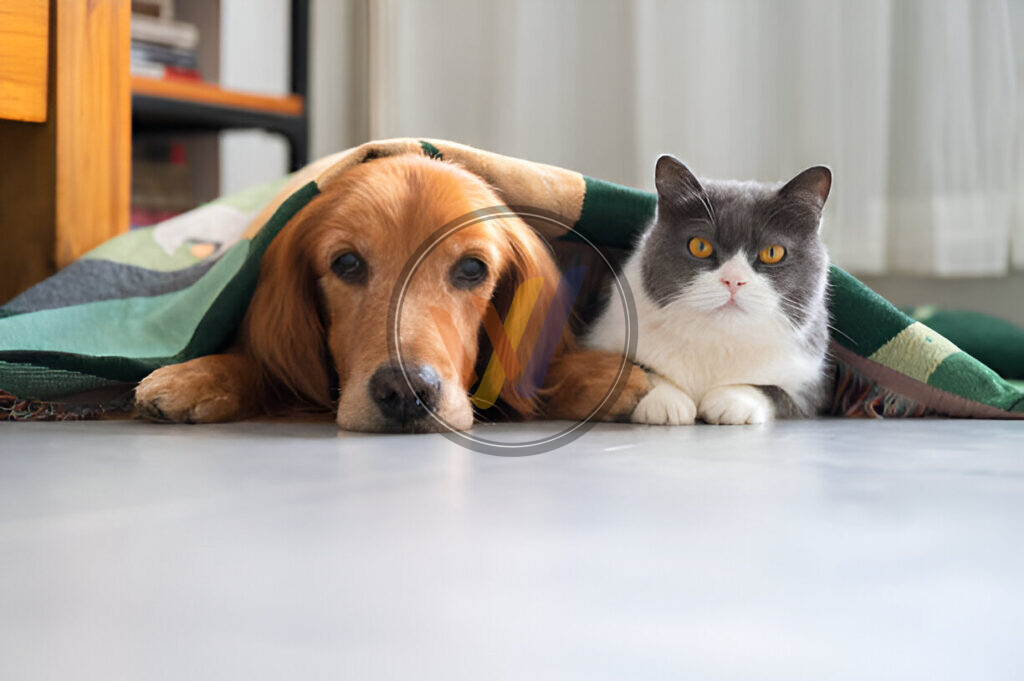BLOG
Exercise and Physical Activity for Dogs and Cats
Exercise and Physical Activity for Dogs and Cats: Creating a Proper Plan for Different Life Stages
Exercise is a key factor in maintaining the overall health of your Dogs and Cats. Depending on age, size, and health, each pet requires a different exercise plan. Below is a detailed guide to help you create a suitable exercise plan for your pet at various stages of life.
1. Early Stage: Getting Familiar with Physical Activity (0-1 Year)
At this stage, pets, especially puppies and kittens, are very active and curious. It’s the perfect time to build exercise habits and develop muscles.
- Puppies: During this stage, puppies need gentle exercise to develop their bones and muscles. You can engage them with toys, running around the yard, or playing interactive games. However, avoid excessive or prolonged activities since their bones are still growing.
- Kittens: Kittens at this age are very energetic and love climbing, jumping, and playing. Games with strings, small balls, or climbing posts will help them develop their skills and bodies.
Tips:
- Each exercise session should last about 15-20 minutes and can be done 3-4 times a day.
- Create a safe environment, avoiding overly risky activities at such a young age.
2. Adulthood (1-7 Years)
At this stage, your pet is fully grown physically and mentally. Their need for exercise increases to maintain a healthy body and prevent issues like obesity.
- Adult Dogs: For larger breeds, walks or runs for 30-60 minutes per day are ideal. Activities like fetch, tug-of-war, or swimming are also beneficial. For smaller breeds, shorter exercises like brisk walks or playtime in the park are more suitable.
- Adult Cats: Cats still need physical activity to stay agile and healthy. Chase or climbing games are good options. You can encourage them to be active with moving toys or scratching posts.
Tips:
- Adjust the exercise schedule based on your pet’s energy levels, but ensure a minimum of 30 minutes of daily activity.
- Regular vet check-ups will help monitor any health issues that may affect their ability to exercise.
3. Middle Age and Senior Years (7 Years and Up)
As pets enter middle age and senior years, joint, heart, and overall health problems may arise. Exercise needs to be adapted to suit their abilities.
- Senior Dogs: Gentle and regular exercise is key. Slow walks, swimming, or simple stretching exercises help maintain joint health and reduce stress on the body. Pay attention to signs of pain or fatigue and adjust the intensity accordingly.
- Senior Cats: Light activities such as playing with a ball or climbing cat trees can still help them stay healthy. However, be mindful of any changes in their mobility or flexibility. If your cat moves slowly or seems in pain, reduce the intensity and duration of exercise.
Tips:
- Break exercise into shorter sessions throughout the day instead of prolonged activity.
- Regular check-ups are essential to monitor joint conditions and other potential health issues.
4. Exercising Your Dogs and Cats with Special Health Conditions
If your pet has health conditions such as arthritis, heart disease, or respiratory problems, you can still continue exercising but with adjustments in intensity. Water-based exercises or short walks are great options. Consult your veterinarian to create a suitable plan.
Conclusion
Exercise plays a vital role in maintaining the physical and mental health of your pets. Creating a proper exercise plan for your pets not only keeps them healthy but also strengthens the bond between you and them. Always pay attention to your pet’s body, adjust the intensity and type of activity according to their stage of life, and provide the love and care they need to thrive.
Keep your pets moving for a healthy and happy life!
WINVN INT CO., LTD
Natural joy made in Vietnam
☎️ +84 932 118 447
📧 info@winvnint.com
🌐 winvnint.com
🌐 https://winvnint.trustpass.alibaba.com/
📌 29, 29 Street, Van Phuc Residence, Thu Duc City, Ho Chi Minh City, Vietnam
 Tel: (+84) 932 118 447
Tel: (+84) 932 118 447  Email: info@winvnint.com
Email: info@winvnint.com 










